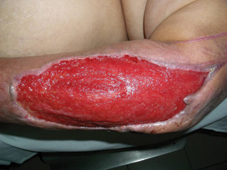49 years old female patient, with type II diabetes treated with insuline and diet. This patient has had a small contusion on her left elbow, from which an extensive sepsis has developed, involving her arm, forearm and hand.
Other Case 3
You are here:











